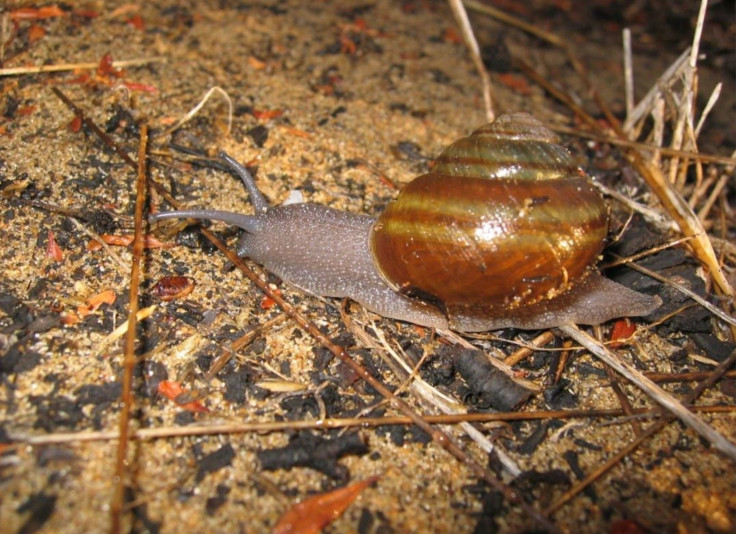Rare California Snail Inching Toward Recovery, Reclassified From 'Endangered' To 'Threatened'
KEY POINTS
- The USFWS reclassified the Morro shoulderband snail's conservation status
- The species' status has improved but may still be at risk in the future
- Threats to the species include habitat loss, wildfires and habitat degradation
A rare snail that can only be found along the central California coast is now recovering after years of conservation efforts. This week, authorities reclassified the conservation status of the Morro shoulderband snail from endangered to threatened.
Unlike other garden snails, this particular species is not a pest and is even beneficial to building up soil. The Morro shoulderband snail gets its name from the dark band "on the shoulder of their shells," the Center for Biological Diversity (CBD) noted.
In 1994, the species was listed as endangered under the Endangered Species Act (ESA). A recovery plan was made by 1998, and by the surveys from 2000 to 2005, more and more snails have been found.
On Wednesday, the U.S. Fish and Wildlife Service (USFWS) announced that the snail is already recovering and officially changed its conservation status from endangered to threatened. According to the agency, this decision was based on "the best available scientific and commercial information," which revealed that the species' status has already improved and it is no longer in danger of extinction in "all or a significant portion of its range."
Cat Darst, the Assistant Field Supervisor for the USFWS, called the ESA a "catalyst for recovery" in a statement from the agency.
"(W)e know it's working when we see species large and small take steps toward delisting," Darst said. "Thanks to city, county and state efforts that include habitat protection and increased surveying, Morro shoulderband snail numbers are now in the thousands rather than hundreds."
The imperiled Morro shoulderband snail is inching toward recovery thanks to habitat protection & conservation efforts: https://t.co/YFr49h4OOu. @USFWS recently reclassified the CA snail from endangered to threatened under the Endangered Species Act. 🐌✨📷 courtesy of Dan Dugan pic.twitter.com/t7Oo8eRKVx
— USFWS News (@USFWSNews) February 2, 2022
"Recovery of this snail demonstrates that to save species from extinction, we have to protect the places where they live," Jeff Miller of the CBD said in the organization's news release, calling it "good news" for the species. "A bonus of saving the Morro snail is it helped in creating and protecting many of the local preserves and open spaces we all love, making life better for all on the Central Coast, from people to gastropods."
However, the move doesn't mean that the Morro shoulderband snail is already out of the woods as they are still not yet fully recovered and are still in danger of extinction "in the foreseeable future."
According to the ruling, the species may still be at risk in the future because of threats such as habitat loss due to development, habitat degradation mainly from invasive plant species and because the "level of continued conservation efforts and habitat management is uncertain."
They are also still threatened by wildfire conditions and changing climate, the USFWS noted. As such, they still need to be protected under the ESA "until these threats can be reduced or eliminated."
That said, the Morro shoulderband snail is included in the list of Central Coast creatures that have benefited from the protection that the ESA provides, according to the CBD. This includes the peregrine falcon, California condor, southern sea otter and brown pelican.

© Copyright IBTimes 2024. All rights reserved.






















